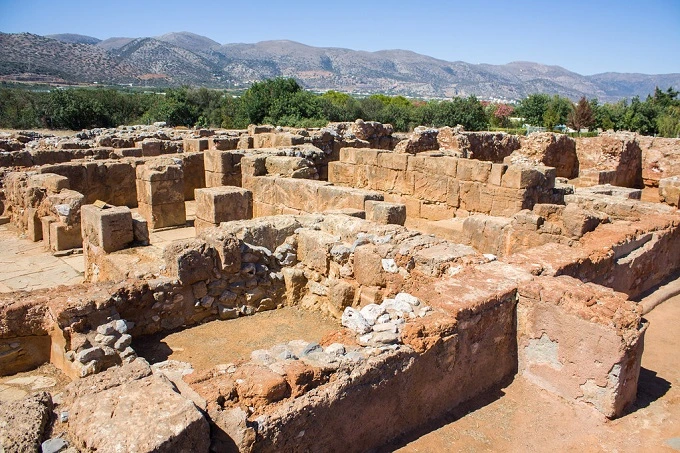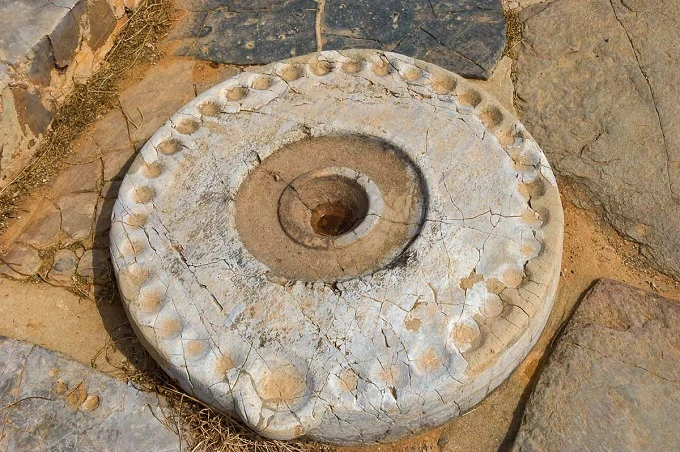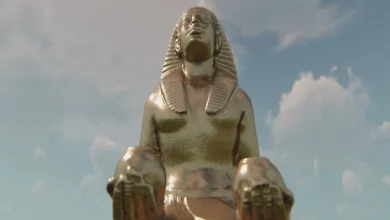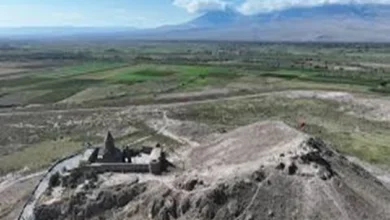Ancient Crete: The mysterious Stone Disc from Malia

From 1900 to 1450 BC, the Cretan-Minoans were at the height of their power, marking the beginning of the first major civilization in European history. This civilization was known as the palace civilization because its principal centers were not cities but palaces – enormous multi-story constructions with several chambers that served as political and economic centers throughout the period.
Archaeologists have discovered and excavated five huge palace complexes on the island of Crete: Knossos, Festos, Malia, Zakros, and Kydonia. Knossos is the most well-known of the palace complexes. In Gournia, a modest palace was important to the locals.

According to mythology, the palace at Malia was constructed in 1900 BC by the renowned monarch Minos’ brother, Sarpedon, who reigned during the time of Minos. This Minoan palace, the third greatest in size, is situated on the northern shore of Crete, near the sea, on the route that connects the eastern and central regions of the island. It is the third-largest palace in size during the Minoan period.

A spherical mystery slab with a diameter of 90 centimeters and a thickness of 36 centimeters has been discovered in the central courtyard of this massive tower. It is incorporated into the floor of a small terrace that is elevated slightly above the courtyard level below. There are 33 perfectly round recesses of the same size and shape that go around the whole circle of the disk, like cups.
The 34th cup is somewhat bigger in size than the previous ones and is implanted in the surface of a protrusion that extends beyond the circumference of the disk’s perimeter. South is the only direction in which this ledge is oriented. In addition, there is a cup-shaped recess in the exact center of the disk. It is notably bigger than the others — its diameter is 15 centimeters, and the borders of its rim and concentric circle are bordered by a low rim and concentric circle, respectively.
Since its discovery by French archaeologists in 1926, this strange monolith, which dates back to 1900-1750 BC, has remained a mystery to experts worldwide. It seems to be some kind of apparatus. What was the motivation for its creation? What is the goal of this project?
The most intriguing aspect of this discovery is that it is one of numerous such devices discovered on the island of Crete, with the disc from Malia being the most momentous. The presence of circular recesses embedded in the surface of stone slabs, which are often organized in a circle or oval, is a feature shared by all of these devices. These slabs all feature one recess that is different in size and placement from the others, and some of them have a central (bigger) recess as well as the others.
In some instances, the stone slab is in the form of a rectangle with recesses around the perimeter, while in others, the stone slab is laid out in numerous parallel rows of stones. While circular and rectangular plates have the same features, there are much more recesses in the latter variant — sometimes as many as one hundred or more — and the look of the plates themselves is significantly different from the others (the number of recesses, the presence or absence of a central recess).
There are some slabs with depressions that have been placed in a spiral or sprinkled randomly throughout the stone’s surface without any apparent order.
The purpose of these plates has remained a mystery to this day. Various definitions were given to them based on what one or another scientist attempted to find in them. Still, none of these definitions contributed much to understanding the issue. In recent years, the most widely accepted theory has been that the disc from Malia and other findings in Crete should be regarded as a counterpart of the Kernos.

The ancient Greek ceramic vessel of a round shape with cups on a corolla was called a core. Historically, it is thought that such cups were utilized for ceremonial reasons. In petroglyph complexes across Europe and several other countries, there are so-called cup-shaped signs, which are smooth depressions in the stone that are occasionally encircled by concentric rings.
In certain cases, circles may be split by radial lines, while in others, they might have a groove running from the center. Cup-shaped signs are often seen around the perimeter of the center recess, which is always bigger.
While the composition is very similar to the disk from Malia, each individual cup-shaped sign is, in fact, just a small hole in the stone. In contrast, the recesses on the disc from Malia are extremely carefully worked out and truly resemble the ancient Greek Kernos, which can be found on the disc from Malia. In light of this, it is reasonable to believe that the purpose of this and other comparable Cretan devices was likewise ceremonial.
As far back as 1928, a suggestion was put out that the disc from Malia was meant to be used in the ritual of panspermia. This idea was not without merit. The gods and the deceased were presented with different fruits as part of this ancient ritual, which has origins that date back to the primordial era of human history.
This was precisely the function of the ancient Greek Kernos, which was made up of several tiny cups arranged in a circle. Each cup was filled with various fruits, wine, and oil, and the light was set in the centre recess to illuminate the room.
According to a different but no less popular account of events, discs and plates with recesses were employed for board games.
According to the American scientist Charles Herberger, who has spent many years studying the Minoan calendar system, one of the most fascinating and surprising hypotheses relating to the mystery of the disk from Malia was put out in 1983 regarding the enigma of the disc from Malia. According to him, the disc from Malia has a lunar-solar calendar on it.
The cyclical movement of the Moon around the Earth and the cyclical movement of the Earth around the sun serve as the foundation of every lunar-solar calendar. The sun counts the years in the lunar-solar calendar, whereas the Moon is responsible for counting the months.
The lunar (synodic) month is the period between two new moons during which the Moon goes through its entire cycle of phases. Even though the synodic month has an average length of 29 days, 12 hours, and 44 minutes, the actual duration of the synodic month varies from the average by around 13 hours.
The solar (tropical) year is the duration of the complete cycle of the Earth’s rotation around the sun, accompanied by the onset of each of the four seasons on the planet. According to the Gregorian calendar, it lasts 365.2422 days or 12.36827 synodic months.
The primary function of the lunar-solar calendar is to maintain synchronization between the lunar and solar time systems. It is important to use a systematic method of inserting the thirteenth lunar month into the calendar year for the average length of the calendar year to match the average duration of the solar year. In the lunar-solar calendar, an embolismic year is defined as one with thirteen months.
Since antiquity, the 3/8 cycle has served as the basis for the rules for the insertion of embolismic years into the calendar, where 8 represents the number of years in a calendar cycle, and 3 represents the number of embolismic years in this cycle. It was common in ancient Babylon and Greece, among other places, to utilize an eight-year calendar cycle. There are 99 synodic months in this cycle, which corresponds to 8 solar years.

The disc from Malia comprises 33 tiny cups, which guarantees that the 8-year cycle is divided symmetrically into 99 synodic months by the disc’s design. Because of its bigger size, the 34th cup is said to symbolize the thirteenth and last month of the year.
With the use of a system of markers and the movement of the markers between holes, it was feasible to maintain a reasonably accurate lunar-solar calendar and begin the agricultural season at around the same time every year. Even though it was constructed experimentally, this kind of calendar represents a significant technological advance for the period it was produced 4000 years ago.




